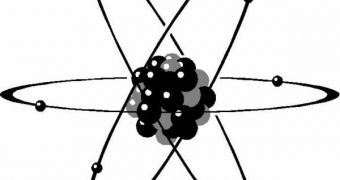Nanoscale magnetic vortices are a relatively new find. A vortex is created from electrons spinning in a certain direction, which is also known as a chirality. The process is characteristics of certain materials that exist on a nano scale, and has aroused the interest of physicists from the University of Arkansas, who wanted to see if a sudden change in chirality could cause an electric pulse. By studying a new class of materials known as ferromagnets, a new class of crystalline materials, which form permanent magnets, or exhibit strong interactions with magnets.
“This is new physics. There are many possibilities that can follow from this. We change the magnetic structure but measure the associated electric field,” physicist Sergey Prosandeev, who, together with colleague Laurent Bellaiche, authored a scientific paper detailing the find, published in a recent issue of the journal Physical Review Letters, said.
The two were investigating the recently discovered vortex structures inside ferromagnets, and noticed that forcing the vortex to spin in a direction opposite to the one it was already spinning in generated an electric impulse.
Their find may have significant applications in areas of electronics such as constructing new memories for computers, or devising new ways of writing data on various supports. Currently, technology in the field relies on changing physical properties such as polarization and magnetization on certain portions of a computer's hard drive, but this method of writing and storing information has its flaws, in that it will not be able to keep up with the massive amount of data that future quantum or optic processors will generate in a short time.
Researchers envision using the new discovery for creating devices able to record vast amounts of data almost instantly. The basis will be set by the nanoscale vortices, on account of the fact that, other than emitting an electric pulse, they can also be charged negatively or positively. The recent study revealed that changing a vortex's rotation from clockwise to counterclockwise produced a positively charged pulse, while forcing it to spin the other way around produced a negatively charged one.
This find will be very important once the new class of memories and data-writing systems will be constructed, because only by analyzing the electric pulse, will scientists, and, eventually, machines be able to understand in which direction a vortex is spinning. “Theoreticians show what can be the next step. These relationships can then be applied to technology,” Prosandeev concluded, adding that a mathematical formula to explain the connections between the vortex spin and the electrical pulses it generated had already been established.

 14 DAY TRIAL //
14 DAY TRIAL //